Purebred and first cross Nudie ewe hoggets being mated to purebred Nudie ram lambs, early May
What a change in just twelve months. From one of the best years in recent times, a drop in farm gate prices plus rampant inflation in all costs is putting huge pressure on sheep farmers. The tripling and crippling of interest rates will be the biggest burden for many. For those with storm damaged properties, it will seem as though there is no end in sight. But, “lifetime memory is ten years”…keep looking forward.
Relativity
Farming second class hill country was like running backwards on a treadmill until aerial topdressing and effective drenches became available in the 1950s and 1963. Look back through history to the long depression of the 1880-1890s, when many farmers went broke; WW1, if you were lucky to return home; the Depression; WW2 and years in concentration camps for some…but after twenty one years of struggle between 1930 and 1951, the Korean wool boom came out of nowhere, and the opportunity to reinvest in farming. There have been big bumps since, the fourteen years from 1985 to 1999, when overdraft interest rates got as high as 32% for some. Government provided an exit fund of $45,000 for those forced to leave their farms… generous?
Farming has always had downturns. It’s how you get through them is the key to your future.
How do we fight back?
-
- Most farms are well maintained, and can cut some costs in the short term.
- Banks will be more worried than you are. Keep in close touch with your banker as you plan how to move forward.
- Tighten the belt…many of us have got used to cafe culture, travel, and indiscretionary spending.
- Focus on the key factor which underpins your productivity: high performing livestock.
- New Zealand’s trade deficit last year was $33.8 billion, equal to all of dairy and meat exports put together, and the worst per capita since 1935. New Zealand is likely to get a credit downgrade, which should drop the exchange rate. That will increase farm gate returns. That plus inflation will reduce your debt in relative terms.
- Average house price in 2021 was 107 times the average house price in 1970, but average salary was only 11 times higher. Farm land prices have moved in tandem, with bigger ups and downs But farmers are not considered the impoverished peasants of the 1980s. For those of you who hung in there, it has been a lucky ride.
Our Nudie auction
On March 1 the Nudie ram lambs averaged $4,600 at auction in Masterton. The sale was strongly supported by commercial farmers, with some of them buying a big enough team to cover an age group of ewes.
All reports to mid May are that those ram lambs have grown on fast, and have tupped well.
We sold 77 purebred Nudies and 53 first cross. With Wairere mating included there should be around 20,000 plus progeny next spring. At Wairere we have 90 purebred ewe hoggets and 250 first cross hoggets mating from April 20. We are delighted with the growth and structure of both the purebreds and the first cross, 42 and 45kg in mid April, with very little culling. And we have found them good to muster and handle. Year two: Ian McDougall masterminded the embryo transfer of 478 embryos this April, and the AI of 1,700 ewes to Nudie semen. This will accelerate the growth of a large scale Nudie flock. Next autumn it is estimated that we will have 120 purebred Nudies, 60 3/4 Nudie(Streakers), and 600 1/2 Nudie(Transition) ram lambs of sale quality.
We have been discussing the best buy for commercial farmers. Would quarter Nudie progeny, from using a half Nudie ram, reduce dagging, and enable once per year shearing? That would lower costs and workload, but retain enough wool to quickly swing back to producing quality and quantity of wool when wool price rebounds. Mind you, the breakeven farm gate price has shot up to $5/kg, if all costs are properly accounted for, including accommodation, and transport.
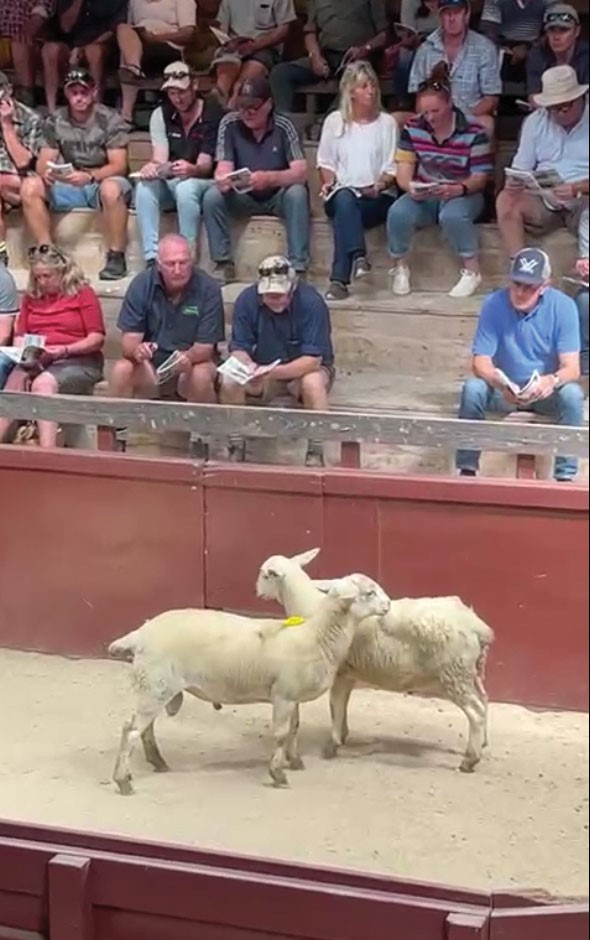
The ram lamb Nudie auction, March 1, average price was $4,600 for purebreds
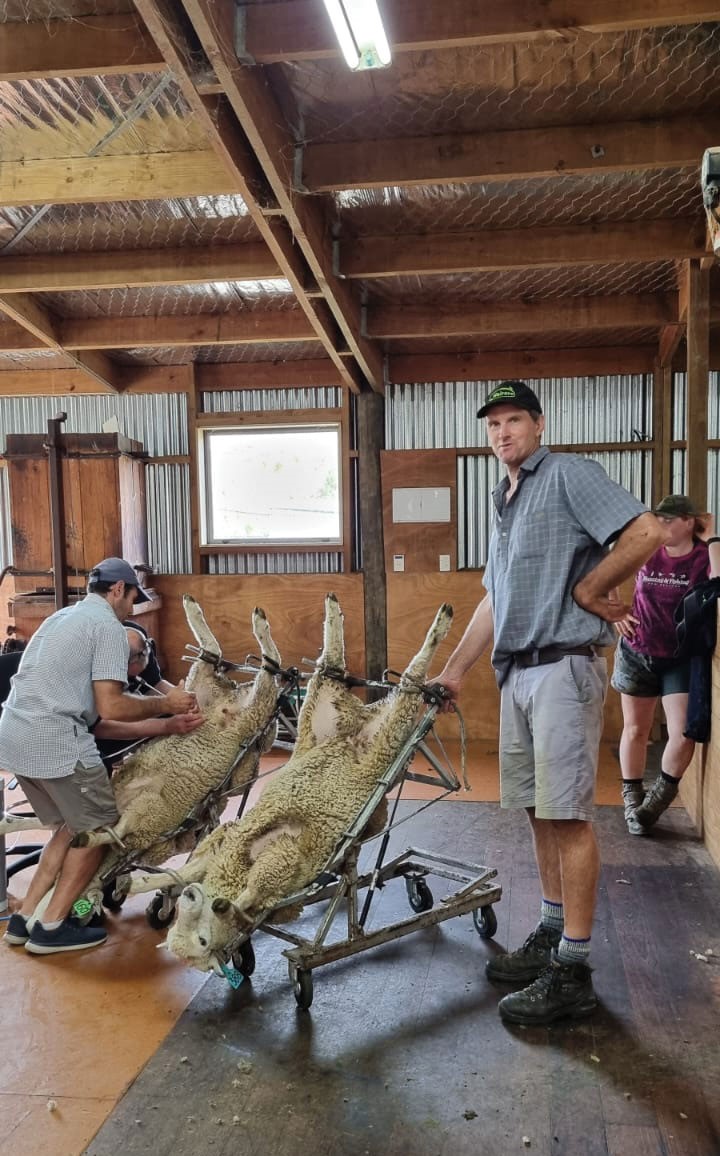
Rob Stratton assisting the embrio transfer and AI programme of Nudies

Wool you, won’t you? Wool sheep or hair sheep? Our granddaughter Charlie, having a good hair day
Continuous improvement at Wairere
With around 10,000 recorded ewes, there is a huge effort and cost put into recording performance. We go through the weaning record of each ewe every year to decide whether to retain or cull her. As you can see from the photo of a representative page, some ewes rear a high lifetime percentage, and a high proportion of those lambs are sold as rams or retained as ewes. Conversely, some ewes rear a lot of lambs, but none are retained as ewes or sold as rams. A few ewes have all their male progeny sold as high priced rams, or retained as stud sires. These ewes are “winners”, and we have done Multiple Ovulation Embryo Transfer programs from these ewes in the past, and will do again.
You will note from the photo, right, that SIL (Sheep Improvement Ltd) sometimes gets it wrong, in our opinion. The SIL algorithm is based on potential rather than actual, so may give a wet dry ewe a high index and a ewe which has reared twins a low index. That’s why we go through each individual record, to “read between the lines”. For example, would you keep a wet dry ewe in your A flock?
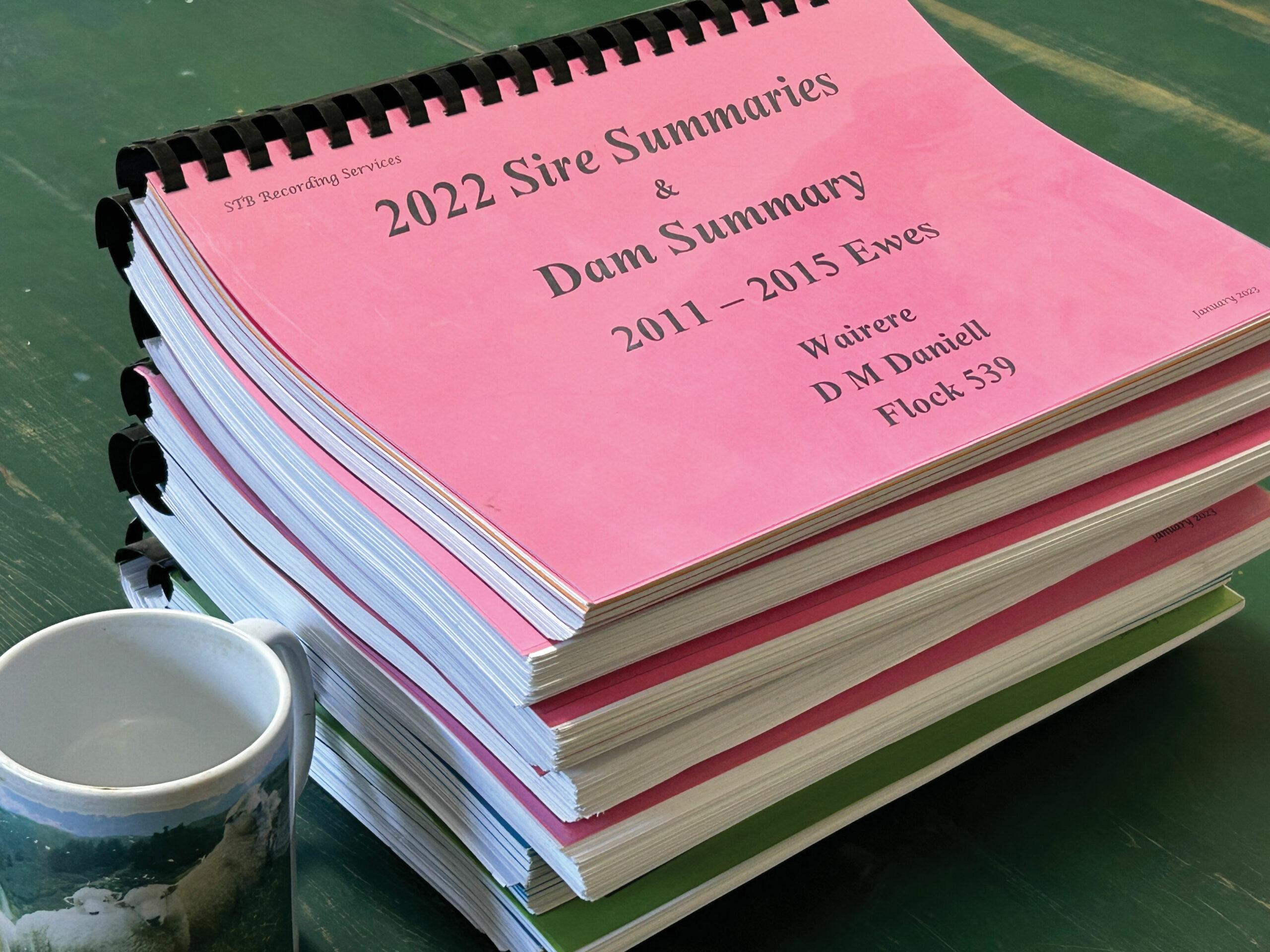
The 2022 lambing and weaning results for 11,204 ewes and ewe hoggets recorded on sheep improvement Ltd (SIL).
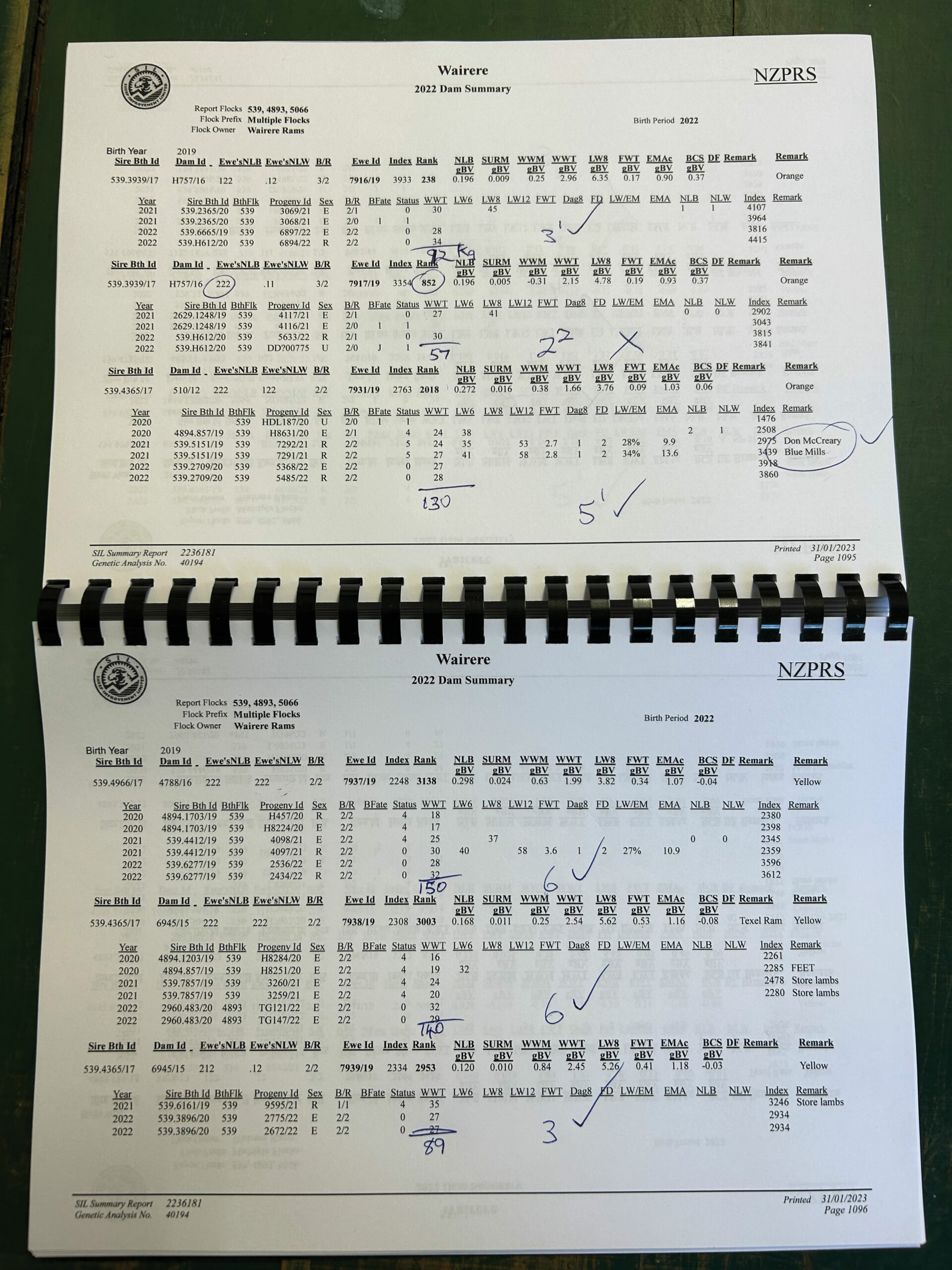
Example of a ewe summary showing the big differences in performance of individual ewes. We go through 3,126 pages like these anuually. These are four tooth ewes, some rear twins as hoggets, and have weaned six lambs by three years old. Note: the two ewes with the highest ranking have the lowest performance. And the two ewes with the highest kg of lambs weaned have the lowest ranking. In my opinion, SIL is focused too much on potential, but we farmers get paid for actual. Because of that bias, we lean towards actual performance in dam and sire selection.
Frequently asked questions
What differentiates Wairere from most ram breeders?
-
- Large numbers: big scale means that we can be ruthless with culling, ensuring that our clients buy rams which are usually in the top twenty percent of ram lambs born. Four out of five are culled.
- Wairere is a good testing ground. The sheep are run at a high stocking rate on second class hill country, with a relatively low cattle ratio. Wairere runs from 200 to 530 metres above sea level, only 2% flat, and has a high wind run. The climate is winter wet and summer dry, with extremes of 146mm in six months to 500mm in one month. A cold wet environment is testing for sheep.
- Lambs and ewes are run in large mobs, so mob pressure squeezes out the non performers.
- All ewe hoggets have been mated since 1966, and are lambed unshepherded. That has bred in early maturity and easycare. Since 2005, hoggets have had to get in lamb to be retained, with a small percentage exception in difficult years.
- Wairere genetics shift very well, not just around New Zealand, but in Australia, the UK, France, Germany, South America.
- Wairere has moved with the times, always innovative. Romneys are the core of Wairere genetics, but we initiated large scale breeding programs with East Friesian cross, then composites with Finn/Texel/Poll Dorset, composite terminals with mainly SuffTex, FE resilient while retaining half Wairere, Wairere Merino Halfbreds, and now Wairere Nudies.
- Clients often receive a premium for their sale sheep. Wairere can assist by posting details of your sale sheep on our email database.
Roadshow events near you
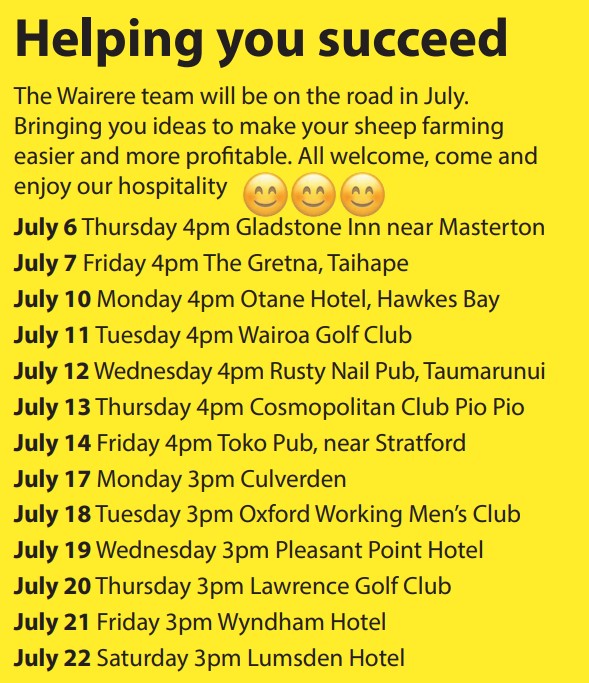
Wairere Central Districts Red Meat Farm Business of the Year
Congrats to the winners for 2023, Wairere ram clients Derek and Leanne White. White Ridge is 435ha effective northwest of Taihape, with a 950mm average rainfall, running around 3,900 sheep and 1,450 cattle stock units at altitude 570 to 800masl. The 2021-22 year had gross farm revenue of $2,001 per hectare and EFS of $897. Lambing survival to sale of 153% and 91% from hoggets that year set the scene for sheep to earn $185.30 per sheep stock unit… but $180 from meat, $5.30 from wool. The average kill date for lambs is January 25, which is early when lambing begins September 17, and hoggets October 5. There is a ewe rotation for mating, but no winter rotation, with ewes off pasture for a month on brassica before lambing. A Pasja crop of 5-10ha helps finish lambs in the summer, and there is 10-15ha of new grass per year. For a few years Derek was buying very high index composite rams from an easy contour, low altitude environment, but the scanning potential of progeny dropped 25%. That prompted the move back to North Island hill country Romneys.
Leanne reckons her dogs are better than Derek’s! This is a team effort which makes farming look easy. As usual after visiting a very well farmed property, you go home asking yourself, “How can I do better?”
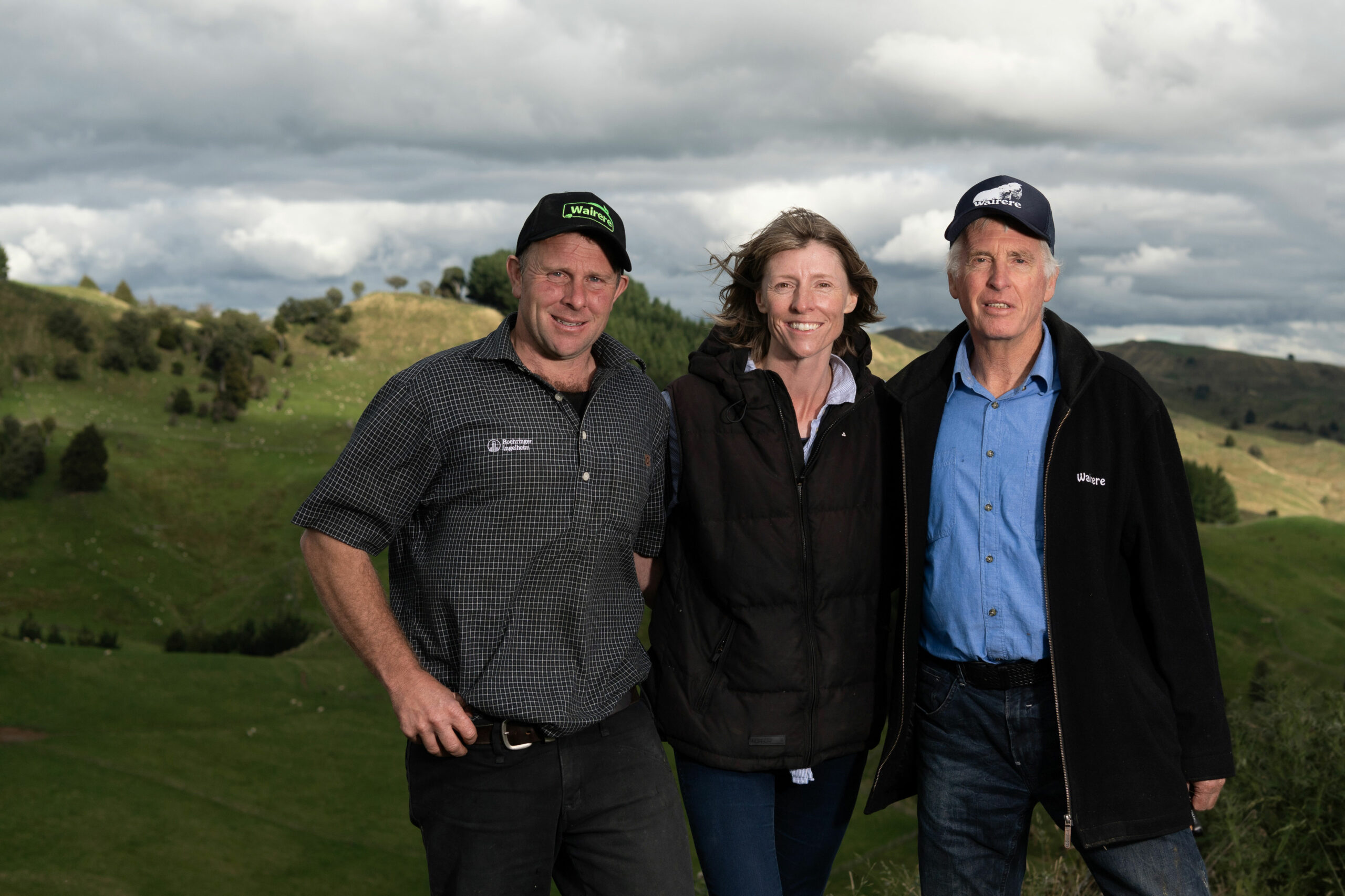
Derek with winners Derek and Leanne White, Taihape
Fight against unfair taxes and regulations
Ian Wishart has written an expose about “climate change”, describing twenty four storms which hit New Zealand between 1868 and 1890. These storms were of a similar intensity to Bola, five of them more intense than Gabrielle. CO2 level was only 285ppm at that time, not the 420 level now, which is blamed for climate change. NIWA recognises only four of those storms, so government propaganda can continue to make people anxious about manmade climate change, and promote taxes on farmers. We have the information to fight back.
Counting the greenhouse emissions from ruminants without counting the sequestration of pasture is simply ridiculous. Farmers should NEVER be taxed for the GHGs from animals. The correct translation of He Waka Eke Noa is, “We are determined to tax you without justification”.
In Australia governments have been more friendly to farmers. Having a trade surplus has protected Australia’s standard of living. Current carbon price is around $30 per tonne. Planting trees for carbon credits is permitted on up to 20% of a farm, and credits can be claimed only if the farm’s productivity in livestock is maintained. I learned this from Wairere Australia client Hamish Mackinnon, who farms 9,000 ewes with his brother Rob. For the past fifteen months Hamish has been working in Melbourne for a “carbon aggregator” business, living in the city to find a wife!
Hamish: “Purchasing Wairere genetics to put over our Multimeat Merinos has altered our course rapidly and we are already yielding the fruits of that decision. It is a credit to you and your family what you have achieved over the last three generations and you should be immensely proud”.
Australian sheep numbers have increased fifteen million over the past three years, while subsidised trees are fast reducing the sheep industry in New Zealand.
Above Right: Mixed age ewes at White Rock Station. They have enjoyed a summer with green grass!
Right: Two tooth ewes at White Rock Station, April 2023
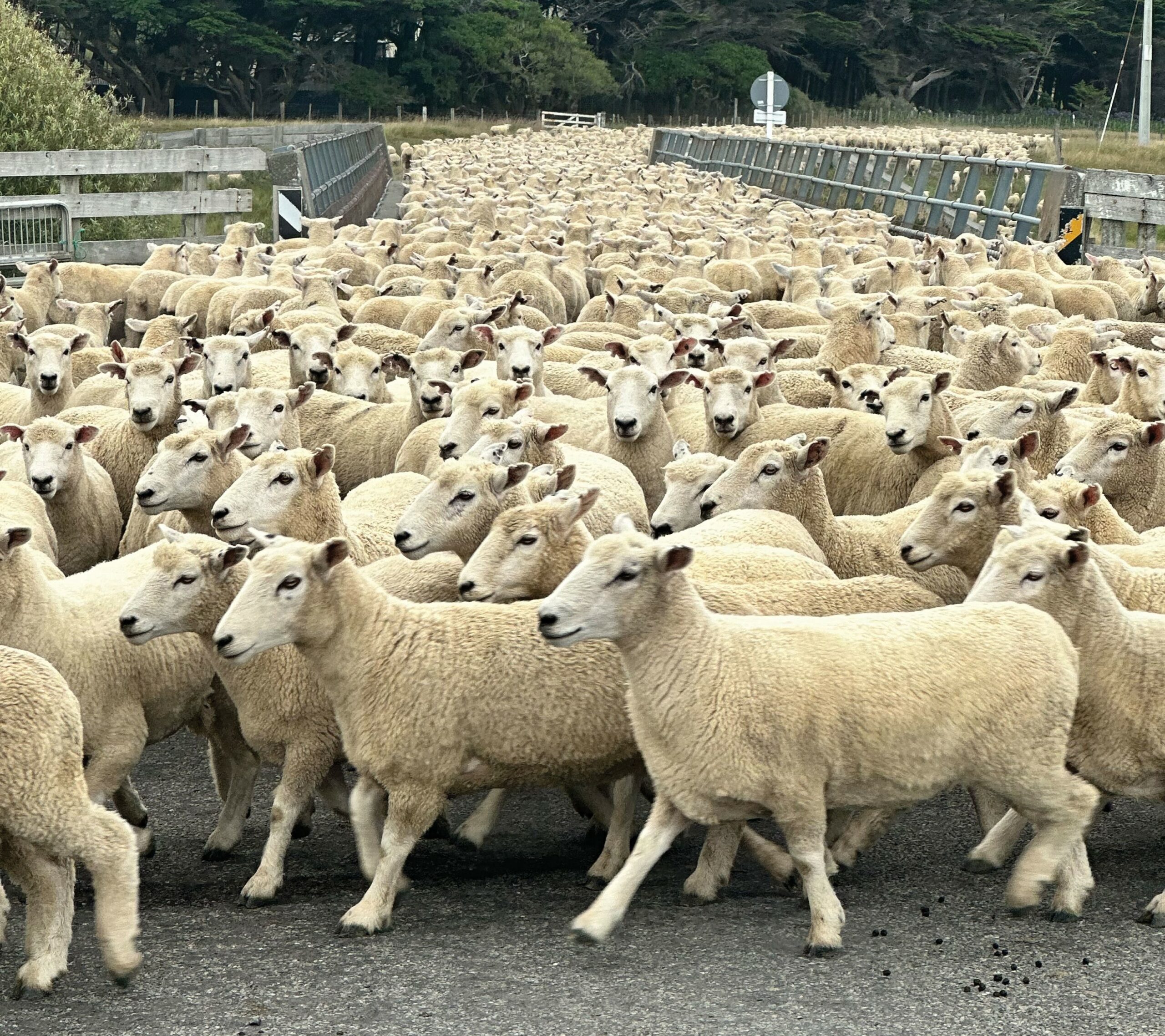
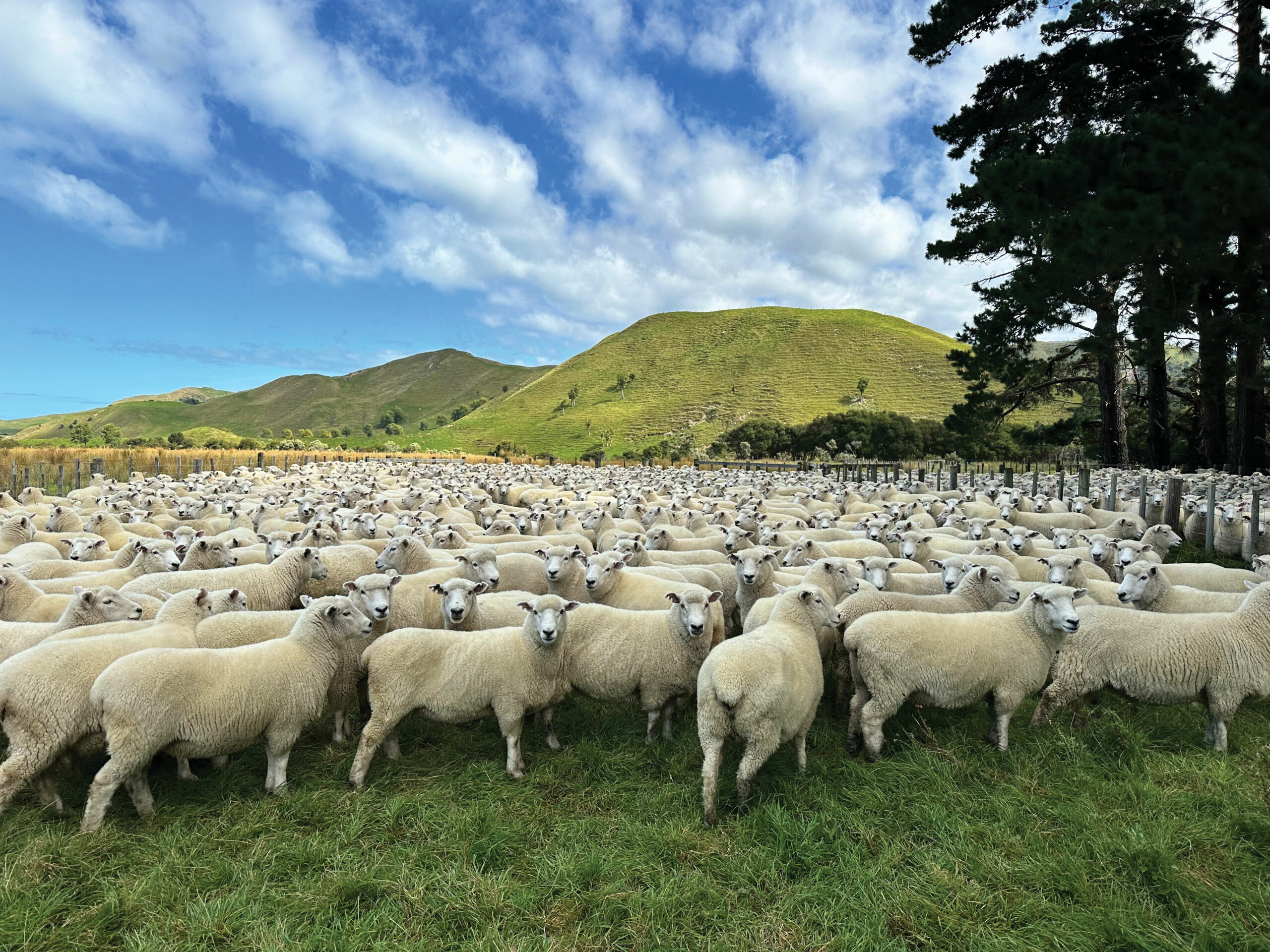
Changes
We welcome Guy and Vicki Goodeve to the Wairere team. Guy was appointed General Manager of Wairere in February this year. This new role arose after a review of Wairere management structure and how best to position Wairere as we grow into the future.
Guy’s first years in farming were milking cows around the Bay of Plenty and Central Plateau while completing a Trade Certificate in Ag, then a Diploma in Agriculture at Massey University. After meeting Vicki at Massey University, and some time dairy farming together, an opportunity to work for Vicki’s father near Aria arose on his 10,000su hill country property. After 7 years there Guy and Vicki built their way into a leasing business that grew to 8,000su over a six year timeframe. Then, because of a combination of the worst drought in fifty years and the global financial crisis, all stock and plant were liquidated to move on.
That was followed by a post at Lochinver Station as Operation Manager, with 85,000su and fourteen staff. That was a great challenge at the time, and a lot of experience was gained.
A shift to the South Island beckoned, with a large dairying operation which was in rapid expansion mode. As unit manager within a team that calved 4800 cows across 2 dairy units and wintering 6000 cows on the adjoining run-offs, planning and logistics were very important. Staff development and retention were a key focus for the emerging industry in South Canterbury. The return to dairy farming was a successful option, setting farm production records for 11 out of 13 years in the South Island.
Then Guy moved further south to Southland as farm manager at Wilkins Farming dairy unit, Wairima, for a season. Ten days of 50cm deep snow in the middle of August were a tough introduction to a deep south spring.
In 2012 the position of General Manager for the Thomas family in Lumsden became available. In his nine years there Guy expanded the dairy from 600 to 1,050 cows, increasing production by 105%. He also increased the dry stock operation to 25,000su, including dairy support stock and rearing all calves from the dairy operation with big improvements in productivity and profit. This was accompanied by buying or leasing more land. An equity share allowed the accumulation of capital which then led to the purchase of Moaland, 4500su next door to Wairere.
This is an admirable effort without any assistance and proves that hard work combined with opportunity can create a future in Agriculture.
Vicki has an Animal Science degree and has run farming operations. She has her own dogs, and has also worked in several other businesses as an agricultural consultant/dairy farm supervisor/Tutor for Diploma of Agribusiness/and wrote unit standards for Primary ITO.
Guy and Vicki have two daughters: Lucy is in her last year studying Animal Science (Major in Breeding and Genetics) at Massey. Kate is also studying a Bachelor of Agribusiness (Major in International Agribusiness) at Massey. Both girls are keen horse riders and were schooled through Columba College, Dunedin and Nga Tawa, Marton.
Guy is bringing a new dynamic to the Wairere operation.
Short story: at the age of 14, Guy was timed on a rowing machine at 5 minutes 58 seconds for two kilometres, faster than Olympic champion Rob Waddell at the time. Two Olympic rowing coaches visited Guy and his family, but he turned down their offer, saying that he wanted to go farming.

Vicki, Lucy, Kate and Guy Goodeve
Farewell
We also farewell Rob Stratton. Rob has filled a valuable role over the past two and a half years, servicing Wairere clients in the North Island. His technical approach to farming is a major strength, one that saw him invited last year to be facilitator for a discussion group. Rob also helped initiate the Central Districts Red Meat Farm Business of the Year, and pulled in Wairere as the major sponsor. He has helped out in a variety of ways, such as driving a truck to Northland with rams for selection there, and handling ewes for our multi week Nudie ET and AI program. His skills and judgment in ram selection, both for stud sires and for clients, have been much appreciated.
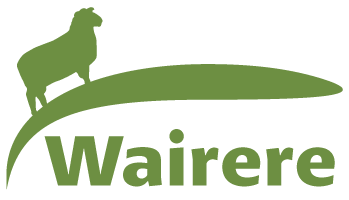
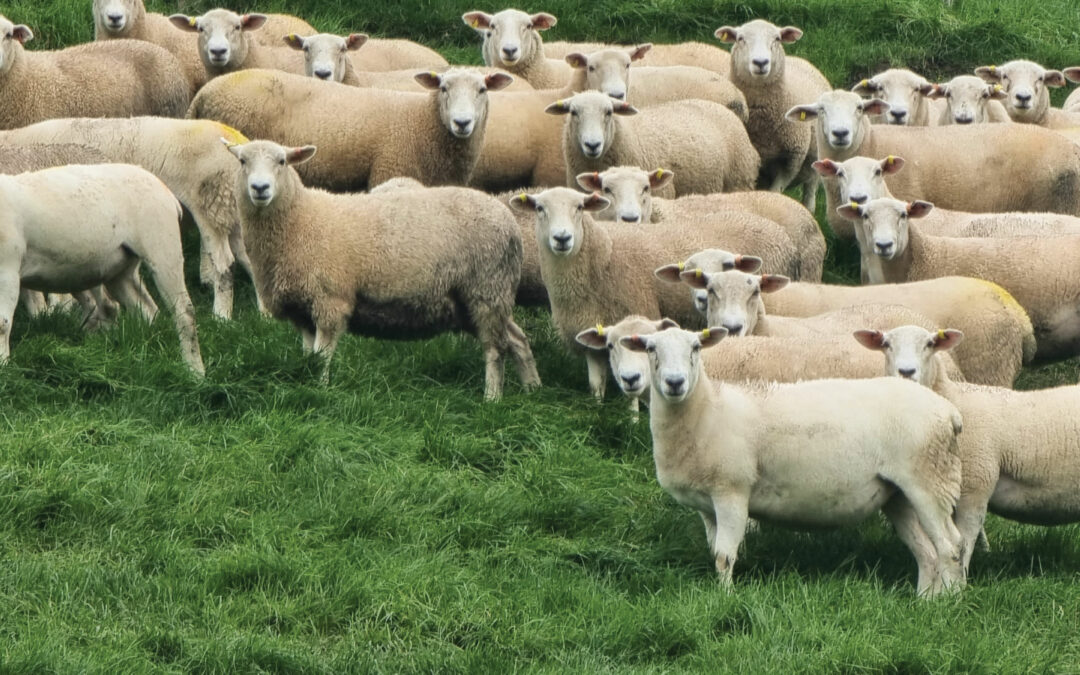
Recent Comments